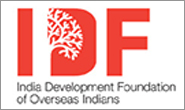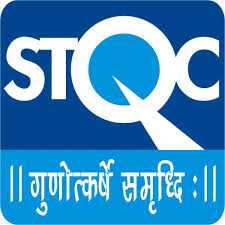Opening Remarks by Shri Montek Singh Ahluwalia, Deputy Chairman, Planning Commission at 3rd SED
03/18/2014
Your Excellency, Chairman Xu Shaoshi of the National Development and Reform Commission of China,Members of the Chinese and Indian delegations,Ladies and Gentlemen,
I am delighted to be here in Beijing, at the start of spring, for the Third meeting of the Strategic Economic Dialogue between India and China. This is a relatively new initiative of the Prime Ministers of our two countries, announced in December 2010. Over the past three years, we have had intensive discussions in this format and I am happy to say that we can now see specific areas of cooperation, which I have no doubt would contribute to greater economic cooperation to our mutual advantage.
Both China and India face a difficult international environment in which the international economic and financial landscape is changing and there are many uncertainties. The world economy recovered quite quickly from the crisis in 2008 but it has been harder hit by the Eurozone crisis of 2011. There are positive signs over the past few months suggesting that the industrialized countries are beginning to recover. Developing countries have also been adversely affected by the global downturn. Growth has slowed down in all our countries although it remains faster than in the industrialized world.
I would like to congratulate you for achieving 7.7% growth in China which is above what you had targeted. GDP growth in India has slowed down to around 5% over the past two years, partly because of the global downturn but also because of the certain domestic constraints, which we have been addressing. I am happy to say the economy is now much stronger than it was a year ago with the current account deficit brought under control, the fiscal deficit also reduced and inflation coming down. We are working to revive the pace of investment in infrastructure, whichwe believe can provide the basis for a return of growth back to 8% over a three year period. Our economic fundamentals are strong and we believe that a return to high growth is possible.
Both India and China have a strong interest in the evolution of an international economic order which is supportive of development. The global environment is changing, with emerging market countries gaining economic weight. This process will continue. However, international institutions have not yet changed sufficiently to reflect this process. We need to increase our cooperation in all existing fora, including the UN and the G-20, to ensure that the system changes in a way which supports our development objectives.
We also need to enhance our bilateral economic cooperation with expanding trade, investment and financial cooperation. The strategic economic dialogue is an important instrument in this. It helps to identify areas of common interest with specific projects for implementation.
I believe the working groups we set up have made significant progress towards this end. I am particularly happy to see that discussions in the area of cooperation in the railways have produced three specific proposals. These are proposals for railway station redevelopment, for raising the speed of passenger trains in India, and for heavy haul freight. Modernisation of Indian railway is a critical objective for India, which will contribute to energy efficiency and also climate sustainability.
Our two sides also have productive exchanges on sharing best practices and sharing technology transfer in energy efficiency, water efficient irrigation and waste water treatment. We are further advancing institutionalized cooperation on sustainable urbanization, an area of priority for both our governments. China’s experience could provide us with valuable pointers for progress in these areas. I am also happy to note that we have concluded an agreement this time under the SED to strengthen cooperation in information and communication technology, an area that has long been considered to hold immense potential for bilateral cooperation.
During their meetings last year, Prime Minister Dr. Manmohan Singh and Premier Li Keqiang underscored the importance of enhancing mutual investment flows. Cross-investments that strengthen supply and production chains between our two economies will provide spin offs in several directions, including reduction of trade imbalance. China is a surplus country with a large scope for outward investment. We hope some of the investment can be channeled to India in areas of mutual interest.
Our 12th Five year Plan emphasized the importance of national investment manufacturing zones and the development of industrial clusters. We would be happy to explore a possibility of China setting up or participating in the establishment of an industrial park in India to encourage clustering of Chinese firms which will provide economies of scale and management. The Government of India will work pro-actively with your government to identify locations for such parks.
Our government is focusing strongly on enhancing connectivity within India and with our neighbours, particularly with South East and East Asia. With the opening up of Myanmar, the possibilities have increased manifold. The proposed BCIM economic corridor connecting Kolkata with Kunming is a case in point for working towards greater economic collaboration through enhanced trade, transit and investment linkages. We are happy to note the progress which has been achieved in the first meeting of the four countries in Kunming last December. India looks forward to hosting the third meeting of the Joint Study Group established for this purpose at the end of 2014.
Trade is an important indicator of economic cooperation and we are happy at the remarkable expansion that has taken place. With a little more effort, we can reach the target of US$ 100 billion which our governments have set for 2015. I must, at his stage, mention the growing imbalance in our trade which is a cause of concern in India. We recognize that trade does not have to be balanced between each pair of countries. However, India’s trade deficit over the last three successive years has been in excess of $35 billion per annum which is not sustainable. It needs to be reduced to sustainable levels by more exports from India to China, and also by Chinese building manufacturing capacities from India for goods it currently export.
We have competitive advantage in niche engineering products, in IT-enabled services,cotton textiles and home furnishings and also in pharmaceuticals which we sell all over the world. Expansion of trade is primarily the responsibility of our exporters, but I do believe that the two governments have a large role to play. I hope the Chinese government will help to provide our exports greater access to the market so that the target of US$ 100 billion can be achieved in a more balanced manner.
Excellency, we are about to go through a general election in India and we expect that a new government will be in place by the end of May. Whatever the outcome of the general election, I am confident that the objective of strengthening bilateral economic relations with China will not be altered and the work of the SED will therefore prove highly productive.
There is the strong possibility that there will be further high level visits between our leaders during the current Year of Friendly Exchanges. This Dialogue could be the basic building block for ideas, projects and initiatives that can be announced during such visits. We should, therefore, aim at concrete deliverables from our deliberations today which can fructify during the course of this year.
Excellency, I am confident that our deliberations today will help further institutionalize this Dialogue between our Governments and contribute immeasurably to the India-China strategic and cooperative partnership for peace and prosperity.
Thank you.





























